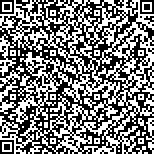李思静,席艳玲.Broca失语患者双侧额下回与全脑功能连接的时间变异性研究[J].中华物理医学与康复杂志,2023,45(8):688-694
扫码阅读全文

|
| Broca失语患者双侧额下回与全脑功能连接的时间变异性研究 |
|
| |
| DOI:10.3760/cma.j.issn.0254-1424.2023.08.004 |
| 中文关键词: 双侧额下回 动态功能连接 Broca失语 静息态功能磁共振成像 |
| 英文关键词: Inferior frontal gyrus Functional connectivity dynamics Broca′s aphasia Aphasia |
| 基金项目:浦东新区科技发展基金事业单位民生科研专项项目(PKJ2022-Y30);上海市浦东新区光明中医医院院级科技基金项目(GMZYXK-202201) |
|
| 摘要点击次数: 5599 |
| 全文下载次数: 4988 |
| 中文摘要: |
| 目的 利用静息态功能磁共振成像技术(rs-fMRI)研究脑卒中后Broca失语(BA)患者双侧额下回与全脑功能连接的时间变异性,并比较维、汉语失语症的差异。 方法 纳入维、汉语BA患者30例(患者组)和维、汉语健康者30例(健康组)。采集rs-fMRI图像,经影像数据预处理、剔除不符合要求的研究对象后,将患者组分为维语患者组(9例)和汉语患者组(12例),将健康组分为维语健康组(13例)和汉语健康组(15例)。进行动态功能连接(dFC)的计算,使用双因素协方差分析获得语种与失语存在交互作用的脑区,并对维、汉语BA患者dFC异常的脑区与语言行为学的相关性进行分析。 结果 双侧额下回与左侧内侧和旁扣带回、右侧中央后回dFC的时间变异性存在交互作用。维语患者组左侧额下回(Broca区)与左侧内侧和旁扣带回dFC的时间变异性低于维语健康组和汉语患者组(P<0.05),右侧额下回(Broca镜像区)与右侧中央后回dFC的时间变异性低于维语健康组和汉语患者组(P<0.05);汉语患者组Broca镜像区与右侧中央后回dFC的时间变异性高于汉语健康组和维语患者组(P<0.05)。维语患者组Broca区与左侧内侧和旁扣带回dFC的时间变异性,与口语表达中的流畅度、系列语言、阅读理解中的填空、书写中的系列书写呈正相关(P<0.05)。 结论 静息态下维、汉语BA患者双侧额下回dFC的时间变异性存在差异,其中Broca区与左侧内侧和旁扣带回dFC的时间变异性降低,对于维语BA患者语言功能受损的识别可能有提示作用,而Broca镜像区与右侧中央后回dFC的时间变异性增强可能是汉语BA患者语言网络重组的结果。 |
| 英文摘要: |
| Objective To observe the temporal variability of functional connectivity between the bilateral inferior frontal gyrus and rest of the brain in persons with Broca′s aphasia (BA) and to compare the connectivity between Uygur and Chinese aphasics. Methods Thirty Chinese and Uygur BA patients (the patient group) and 30 healthy people speaking Uygur and Chinese (the healthy group) were included. rs-fMRI images were acquired, and the patient group was divided then into a Uygur language patient group (9 cases) and a Chinese language patient group (12 cases). The healthy group was divided into a Uygur language healthy group (13 cases) and a Chinese language healthy group (15 cases). Dynamic functional connectivity (dFC) calculations were performed, and a two-factor analysis of covariance was used to obtain the brain regions in which there was an interaction between language and aphasia and to analyze the correlation between the brain regions with abnormal dFCs and linguistic behavior. Results Interaction between the bilateral inferior frontal gyrus and the left medial and paracentral cingulate gyrus and the right postcentral gyrus dFC was observed to vary. Temporal variability among the Uygur patients was significantly less than among the Uygur healthy and Chinese patient groups. The temporal variability of Broca′s mirror area and the right postcentral gyrus in the Chinese patient group was significantly greater than in the Chinese healthy group or the Uygur patient group. Variability of Broca′s area and the left medial and paracingulate cingulate gyrus in the Uygur patients group correlated positively with oral fluency, reading comprehension and writing. Conclusion There are differences in the temporal variability of the dFC in the bilateral inferior frontal gyrus between Uygur and Chinese BA patients. The lower variability of Broca′s area with the left medial and paracingulate and cingulate gyrus may help to identify impaired language function in BA patients. The enhanced variability of the Broca′s mirror image area with the right postcentral gyrus may be the result of reorganization of the linguistic network in Chinese BA patients. |
|
查看全文
查看/发表评论 下载PDF阅读器 |
| 关闭 |